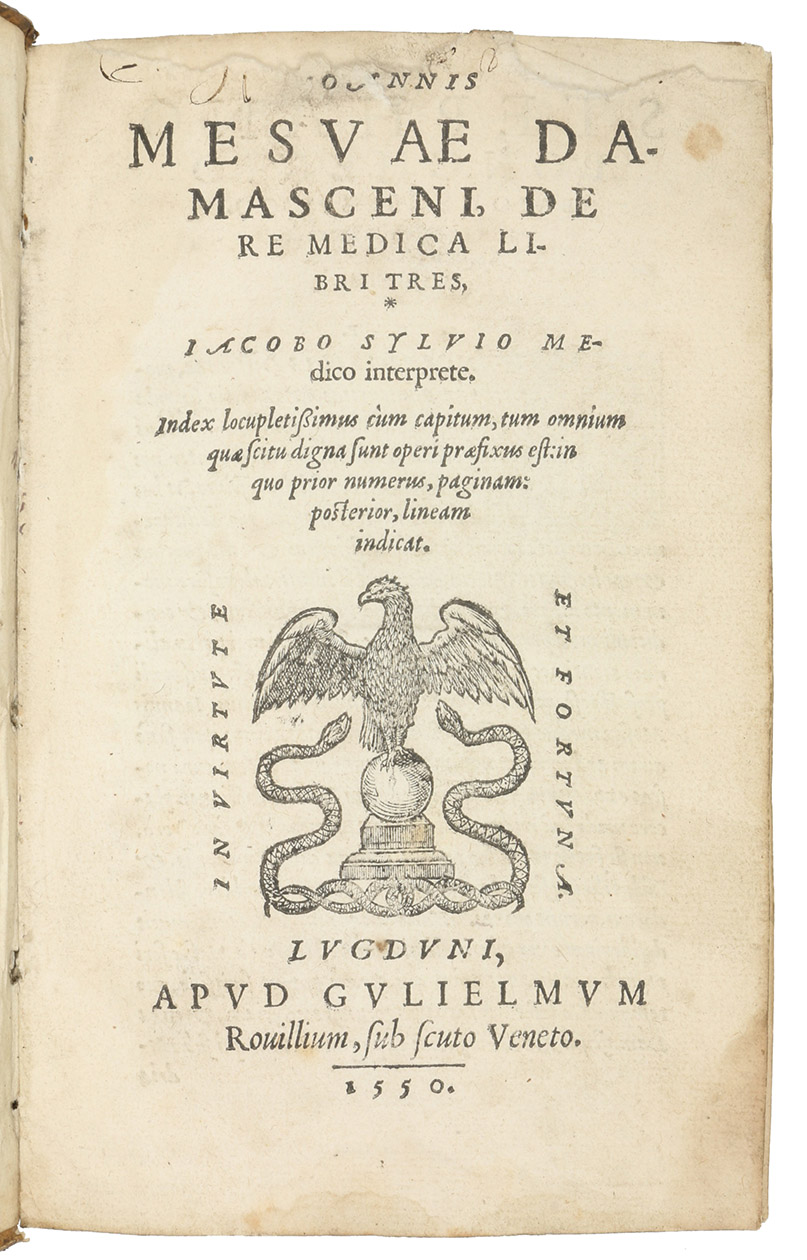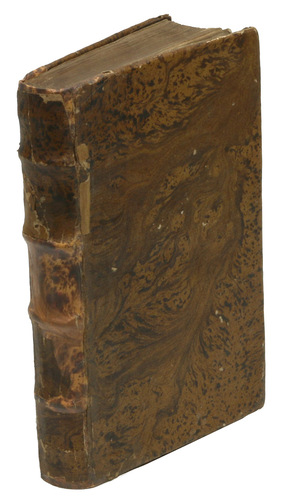MASAWAIH al-MARDINI (MESUE the younger).
De re medica libri tres, Jacobo Sylvio interprete.
Lyon, Guillaume Rouillé (colophon: printed by Philibert Rollet), 1550. 8vo. With Rouillés woodcut device on the title-page (eagle on a globe, flanked by 2 snakes), numerous woodcut decorated initials, and an arabesque decoration below the colophon. 19th-century marbled boards, manuscript spine label. [16], 421, [1], [2 blank] pp.
€ 3,500
Well-made but popularly priced Lyon 8vo edition of Mesues three seminal pharmacological works, including his great pharmacological handbook, the principal model for the European pharmacopoeias, translated into Latin by Jacques Dubois/Jacobus Sylvius (1478-1555), who taught anatomy at Paris (his students including Vesalius and Gesner). Dubois first published it in a Paris folio edition in 1542. Speaking of the "artisanal epistemology" crucial to the European scientific revolution, De Vos calls Mesues present works "a conduit for the Arabic contributions to that epistemology and its subsequent development and impact", describing them as "the most dominant source of pharmaceutical writings" and "by far the most influential in the subsequent development of European pharmacy", with Duboiss new Latin translation "of particular note" (pp. 668, 670, 673).
It is by far the most detailed and extensive mediaeval book of pharmacological recipes, far surpassing the 12th-century Antidotarium Nicolai, which had been the standard work in Europe. Not only does it include 432 recipes for compound medications (compared with Nicolais 85), it arranges them by the kind of medicine, rather than alphabetically, and unlike Nicolai it gives detailed instructions for their preparation. It largely superseded Nicolai in Europe in the late 1300s and early 1400s. Although Mesue and his present works have fallen into undeserved obscurity in the general public, they went through more editions than Ibn Sina (Avicenna), Galen or Discorides.
If the attribution to "Joannis Mesuae Damasceni" is correct, the author must be Yahya (= Yuhanna) ibn Masawaih al-Mardini (ca. 925-1015), known in the West as Mesue the younger.
Provenance: 1) owners inscription in ink, dated 1636, struck through and difficult to decipher, on front paste-down; 2) another dated 21 August 1818, on back paste-down, also difficult to read; 3) 19th-century ink owners inscription of Arthur Rénaux on front paste-down. Occasional browning; an owners inscription(?) erased on the title-page with slight loss to authors name. Binding rubbed; hinges cracked and minor chips in the spine. Baudrier IX, 176; Durling 3144; USTC 150499; Wellcome 4280; cf. Hirsch I, 171f; not in BMC STC French; for Mesue and the present works: Paula De Vos, "The Prince of Medicine: Yuhanna ibn Masawayh and the foundations of the Western pharmaceutical tradition", in: Isis, 104 (2013), pp. 667-712; Prioreschi, History of medicine, IV (Byzantine and Islamic), pp. 290-291.
Related Subjects:



